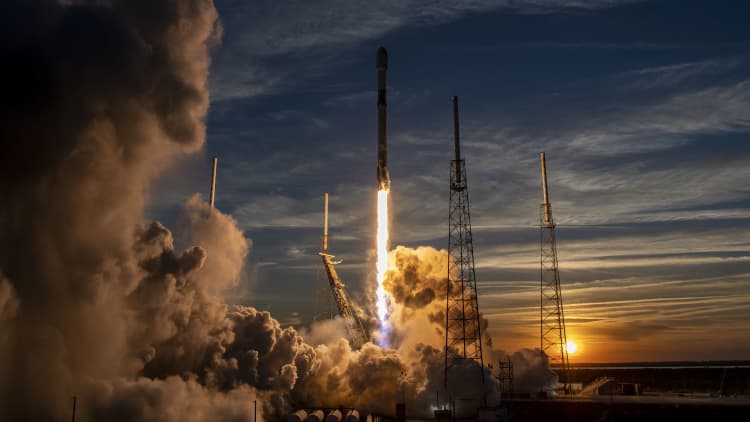
On January 31, 2023, a Falcon 9 rocket launched the Starlink mission from Vandenberg Space Force Base in California.
Space Exploration Technologies Corporation
The Federal Aviation Administration has given SpaceX the go-ahead to resume flying its workhorse Falcon 9 rocket after a brief flight, with Musk’s company planning to launch its next satellite-carrying mission as early as Saturday.
Just 15 days after the US Federal Aviation Administration (FAA) approved its launch of Starlink satellites, the rocket suffered a rare flight failure in orbit.
“The FAA has determined that the July 11 accident did not involve a public safety issue,” the regulator said in a statement to CNBC late Thursday., The rocket was allowed to “return to flight operations while the overall investigation is ongoing.”
The hiatus following the failed flight was unusually brief, but SpaceX argued that the rocket’s rapid launch rate – averaging every two to three days this year – and an “unprecedented level of flight data” from more than 300 consecutive successful orbital launches over nearly a decade provided Support faster service restoration.
“Safety and reliability are at the core of SpaceX’s operations. Without this focus, we would not be able to achieve our current pace,” the company wrote in a statement. Statement on its website Thursday.
Sign up here to receive the weekly edition of CNBC’s Space Investing Newsletter.
During the July 11 launch, the rocket’s lower first stage, or booster, powered by nine engines, performed as expected before returning to land. However, the upper second stage of the rocket had only one engine and failed to re-ignite as planned and was unable to complete its mission.
SpaceX traced the cause of the in-flight failure to a tube called a “sense line,” which is part of the rocket’s liquid oxygen system, one of the propellants that powers the second-stage engine. The company said a loose clamp on the tube and severe vibrations from the rocket engine caused the rupture. A ruptured sensing wire caused a leak of liquid oxygen, causing damage to the rocket’s engine as it attempted to restart in space.
The company said the tube and its associated pressure sensor would be removed from the rocket’s upper stage engine “in the near future” during launch, noting that it was not a safety-critical component. The company plans to rely on alternative sensors in the meantime as it currently tests long-term design changes under FAA oversight.
“Additional qualification, inspection and scrubbing of all sensing wires and clips on the active booster cluster resulted in active replacement at selected locations,” SpaceX added.








